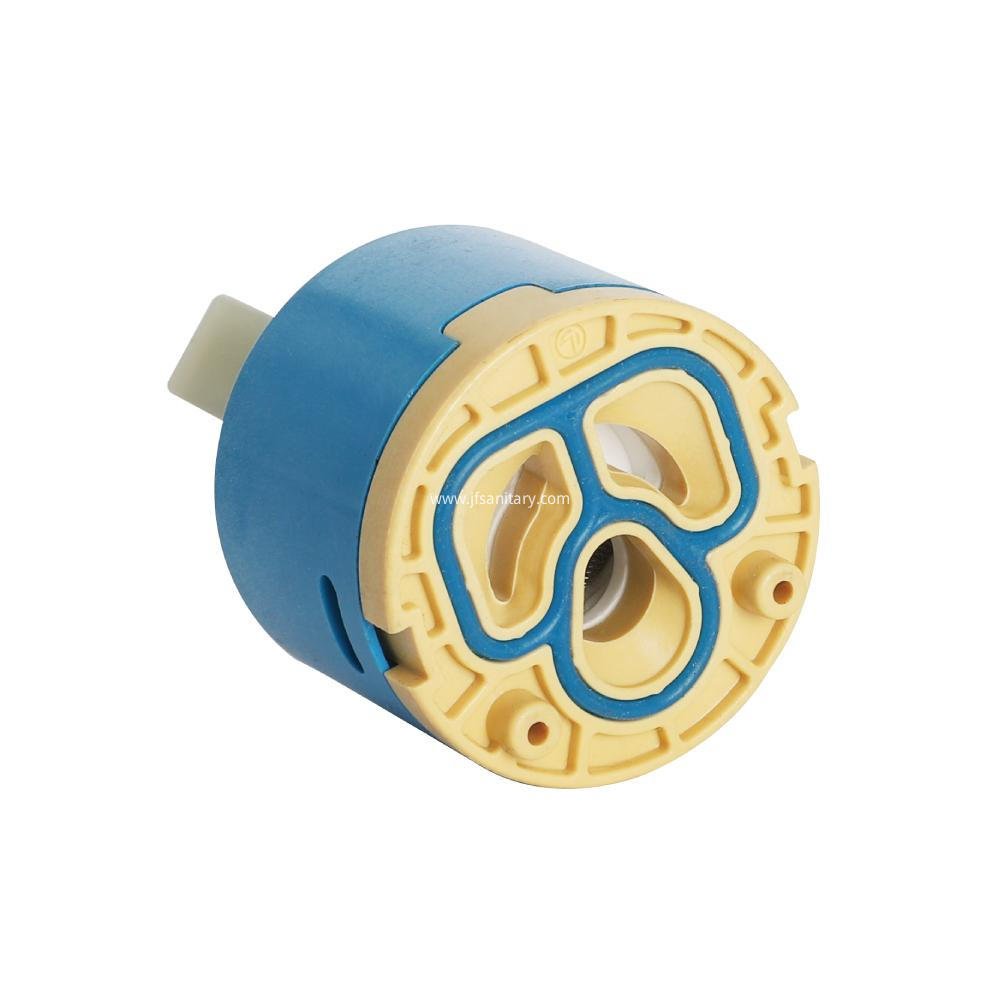Faucet valve and cartridge
The only function of a valve is to control the amount of water that passes through the faucet. It can turn water on and off and limit the flow of water from a trickle to a flood. It sounds abstract, but it took most of human history to invent a valve that effectively controlled water and was reliable and durable enough to be used on a household faucet. In fact, faucet valves have been around for 150 years. The valve is the most critical part of a modern faucet. If the finishes are peeling or peeling, your faucet may no longer be pretty, but it still works -- it's still a faucet. But if the valve fails, the faucet is no longer a faucet. It cannot perform its basic function: providing a measured amount of water. Therefore, faucet valves should always be the best you can afford, and valve reliability should be the most important consideration when purchasing a faucet. A valve consists of two parts. The moving part or "rod" is connected to the handle and the fixed part or "seat". To cut off the flow of water, press the moving part against the fixed part until the water stops.  In early faucets, the stem moved up and down within the body of the faucet itself. Modern valves, however, are usually built into a detachable carrier called a cartridge that is inserted into the body of the faucet. Any wear on the valve occurs inside the filter element, not inside the faucet body. If the valve fails, the filter element can be easily replaced to restore faucet function. Rework the faucet body or replace the entire faucet before removing the filter element. Early faucets provided separate hot and cold water -- one for hot water and the other for cold water. Temperature mixing occurs outside the faucet in the sink or bathtub. These can be dangerous (the hot water can be boiling hot) and are rarely seen in North America today except for historical restoration. The modern faucet is a hybrid faucet invented by Canadian Thomas Campbell and patented in England in 1880. It mixes hot and cold water inside the faucet -- causing no harm until it reaches the sink or bathtub. "Gasketless" valves were a big step forward in the 1960s. These valves still require a compressed rubber seal to shut off the water, but the new design eliminates the torsional motion that quickly wears the rubber seat gasket. As technology improves, rubber or silicone seals in gasketless valves can last five years or longer. State-of-the-art ceramic disc completely eliminates friction with rubber. The flow of water is controlled by almost indestructible ceramic discs rather than silicone or rubber seals. Although rubber seals are still used, they are static. They don't move and there's nothing against them, so they last a long time.
In early faucets, the stem moved up and down within the body of the faucet itself. Modern valves, however, are usually built into a detachable carrier called a cartridge that is inserted into the body of the faucet. Any wear on the valve occurs inside the filter element, not inside the faucet body. If the valve fails, the filter element can be easily replaced to restore faucet function. Rework the faucet body or replace the entire faucet before removing the filter element. Early faucets provided separate hot and cold water -- one for hot water and the other for cold water. Temperature mixing occurs outside the faucet in the sink or bathtub. These can be dangerous (the hot water can be boiling hot) and are rarely seen in North America today except for historical restoration. The modern faucet is a hybrid faucet invented by Canadian Thomas Campbell and patented in England in 1880. It mixes hot and cold water inside the faucet -- causing no harm until it reaches the sink or bathtub. "Gasketless" valves were a big step forward in the 1960s. These valves still require a compressed rubber seal to shut off the water, but the new design eliminates the torsional motion that quickly wears the rubber seat gasket. As technology improves, rubber or silicone seals in gasketless valves can last five years or longer. State-of-the-art ceramic disc completely eliminates friction with rubber. The flow of water is controlled by almost indestructible ceramic discs rather than silicone or rubber seals. Although rubber seals are still used, they are static. They don't move and there's nothing against them, so they last a long time.



